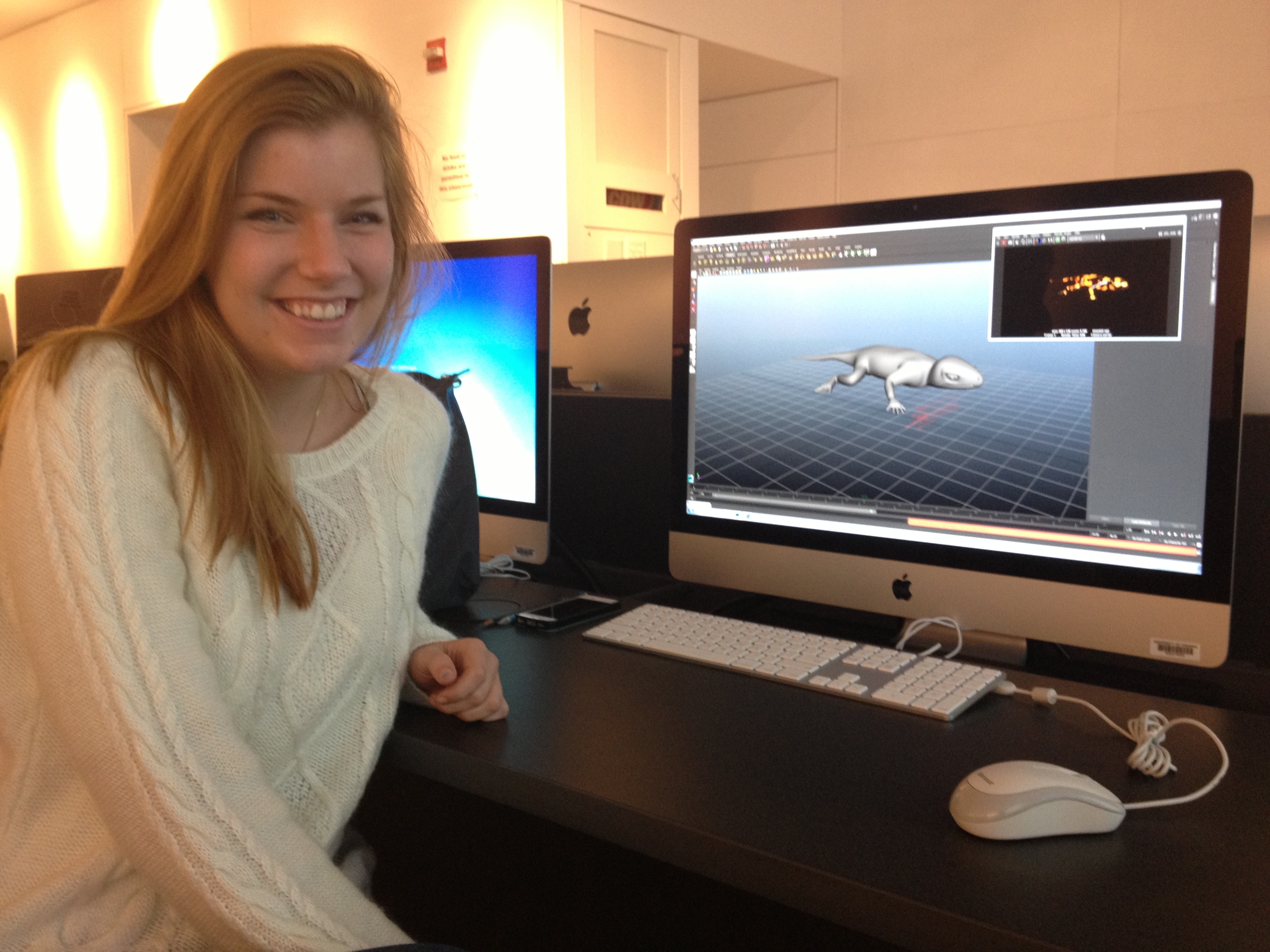The Kluge-Ruhe Aboriginal Art Collection has partnered with the University of Virginia School of Architecture and the Virginia Film Festival to offer an opportunity for middle school students to try their hands at using Pixar-level animation software.
The goal will be to produce a short animated film of an Aboriginal Dreaming story, which will be used as an educational resource by the affiliated Aboriginal community in Australia. The full-day workshop, titled “Dreaming in Animation,” is one of many programs offered Nov. 9 as part of the Virginia Film Festival’s Family Day activities.
Each participant will be mentored by a U.Va. student and taught the basics of Autodesk Maya, a comprehensive 3D software program. Then, each of the 15 pairs will create movements for one animal in the Dreaming story, which will later be stitched together to create the final animated short.
The program is spearheaded by Lauren Maupin, education and program coordinator at the Kluge-Ruhe Collection, and Earl Mark, associate professor in the School of Architecture. Mark, who has extensive experience working in computer animation, teaches three U.Va. classes where digital moviemaking and animation are the primary focuses.
Jane Freeman, outreach coordinator for the Virginia Film Festival, said the “workshop promises to be an outstanding experience for young filmmakers. The combination of the student support along with the unique equipment incorporated in the workshop makes for a very special program.”
“Dreaming” is a term used to describe the belief systems of Australian Aboriginal cultures, which explains the spiritual origins and existence of the land and its people. The story that will be animated in the program is about Jiddelek, a frog who drinks all the water in Australia. Animals including a wombat, a kangaroo, an emu and other birds and lizards, become thirsty and devise a plan to make Jiddelek give the water back. Each animal dances before the frog, and finally the humorous antics of a wriggling eel cause Jiddelek to laugh, emptying the water back into the rivers, creeks, lakes and waterholes.
The Kluge-Ruhe Collection has collaborated with the Aboriginal group that owns the story of Jiddelek, the Gunai/Kurnai people of East Gippsland. Community organizer Doris Paton will provide the narration for the story, and the final product will be used as a tool to preserve and educate young generations of Gunai/Kurnai people about their traditional stories and heritage.
“It has been exciting to see how, with the superb dedication of Earl Mark, the program has grown to include such a variety of partners and beneficiaries,” Maupin said. “Both the workshop and the final product will provide an unparalleled opportunity for all involved.”
Four U.Va. students (Tina Cheng, Caitlin Gallagher, Marina Michael and Monica Mohapatra) and two alumni (Roderick Cruz and Carter Tata) are building the characters and the environment for the animation in preparation for the program. Fifteen U.Va. students from varying disciplines have volunteered to be mentors on the day of the program.
“Tapping into the high creativity of middle-school age participants, combined with the imagination and intelligence of University students, has a wonderful potential to build visual interpretations of the Dreaming story,” Mark said.
Middle school students who want to participate in this free program are encouraged to apply as soon as possible by pre-registering on the Virginia Film Festival’s Family Day website and completing the program application. The program will take place at Campbell Hall on Nov. 9 from 9 a.m. to 3:30 p.m., with lunch included. The workshop is part of Kluge-Ruhe’s Indigenous Film Program, supported by U.Va. Arts Council.
Media Contact
Article Information
October 31, 2013
/content/dreaming-animation-offers-middle-schoolers-opportunity-collaborate-globally

